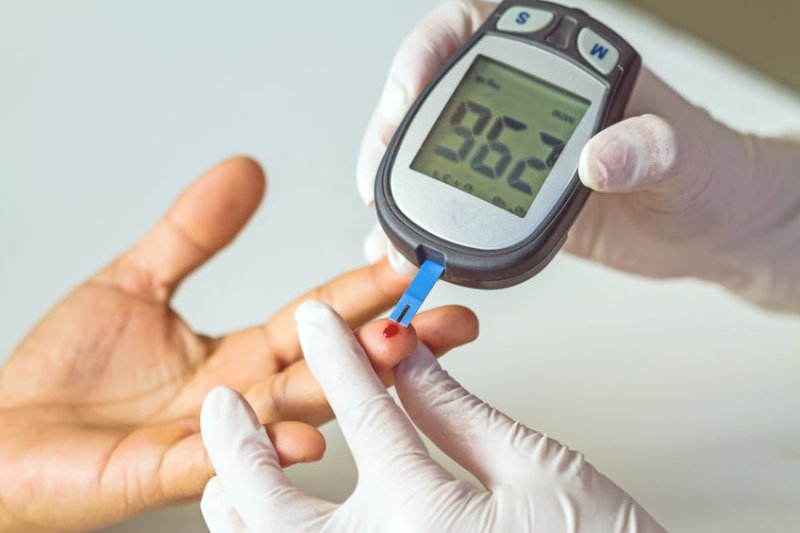Managing blood sugar levels is a crucial aspect of living with diabetes and for those at risk of developing the condition. While dietary choices and medication play essential roles in blood sugar management, physical activity is equally vital. Exercise has profound effects on blood sugar control, offering numerous benefits that contribute to overall health. This guide explores how exercise impacts blood sugar levels, the types of exercise that are most effective, recommended guidelines, and practical tips for incorporating physical activity into daily life.
Understanding Blood Sugar and Its Regulation
Blood sugar, or glucose, is the primary energy source for the body’s cells. After consuming food, carbohydrates break down into glucose, which enters the bloodstream. Insulin, a hormone produced by the pancreas, helps regulate blood sugar levels by facilitating the uptake of glucose into cells.
For individuals with diabetes or insulin resistance, maintaining optimal blood sugar levels can be challenging. High blood sugar (hyperglycemia) can lead to serious health complications, while low blood sugar (hypoglycemia) can cause immediate health risks. Exercise plays a crucial role in regulating blood sugar levels by enhancing insulin sensitivity, promoting glucose uptake, and improving overall metabolic health.
The Impact of Exercise on Blood Sugar Levels
- Improved Insulin Sensitivity
- Regular physical activity enhances the body’s sensitivity to insulin, making it easier for cells to absorb glucose. This effect helps lower blood sugar levels and can reduce the risk of developing insulin resistance, a precursor to type 2 diabetes.
- Increased Glucose Uptake
- During exercise, muscles utilize glucose for energy, leading to a decrease in blood sugar levels. This effect can be particularly beneficial for individuals with diabetes, as it provides a natural means to lower elevated blood sugar.
- Weight Management
- Maintaining a healthy weight is vital for blood sugar control. Exercise aids in weight management by burning calories, building muscle mass, and boosting metabolism. Reducing excess weight can enhance insulin sensitivity and improve blood sugar regulation.
- Reduced Stress Levels
- Physical activity helps reduce stress and anxiety, both of which can negatively impact blood sugar levels. Exercise stimulates the release of endorphins, the body’s natural mood elevators, promoting a sense of well-being.
- Long-Term Benefits
- Regular exercise is associated with long-term improvements in blood sugar control, reduced risk of diabetes complications, and better overall health outcomes. Studies have shown that individuals who engage in regular physical activity experience lower A1C levels, which reflect average blood sugar over time.
Types of Exercise for Blood Sugar Control
Different types of exercise offer unique benefits for blood sugar management. A well-rounded fitness routine should include a combination of aerobic exercise, strength training, and flexibility exercises.
- Aerobic Exercise
- Aerobic activities, also known as cardiovascular exercise, include walking, running, cycling, swimming, and dancing. These activities elevate the heart rate and improve cardiovascular health, making them effective for blood sugar control.
- Recommendations: Aim for at least 150 minutes of moderate-intensity aerobic exercise per week. This can be broken down into 30 minutes a day, five days a week.
- Strength Training
- Strength training involves using weights or resistance to build muscle mass. Increased muscle mass enhances glucose uptake and improves insulin sensitivity, making it an important component of blood sugar management.
- Recommendations: Include strength training exercises at least two days a week, targeting all major muscle groups.
- Flexibility and Balance Exercises
- Flexibility and balance exercises, such as yoga and Pilates, promote overall fitness and reduce the risk of injury. While they may not directly impact blood sugar levels, they contribute to overall well-being and can enhance the effectiveness of other types of exercise.
- Recommendations: Incorporate flexibility and balance exercises into your routine at least two to three times a week.
Creating an Exercise Plan
Developing a personalized exercise plan can help ensure that physical activity becomes a sustainable part of your lifestyle. Consider the following steps when creating your plan:
- Consult a Healthcare Professional
- Before starting any exercise program, especially if you have diabetes or other health conditions, consult with your healthcare provider. They can help you develop a safe and effective plan based on your individual needs and health status.
- Set Realistic Goals
- Set achievable fitness goals that align with your lifestyle and preferences. Whether it’s walking for 30 minutes a day or attending a fitness class, find activities you enjoy to increase adherence to your exercise routine.
- Monitor Blood Sugar Levels
- Regularly monitor your blood sugar levels before and after exercise to understand how different activities affect your body. This information can help you make informed decisions about your exercise routine and adjust it as needed.
- Incorporate Variety
- Vary your workouts to prevent boredom and keep yourself motivated. Try different types of aerobic exercises, strength training routines, or group classes to maintain interest and challenge your body.
- Schedule Workouts
- Treat your workouts like appointments by scheduling them into your daily routine. Consistency is key for establishing a successful exercise habit.
- Listen to Your Body
- Pay attention to how your body feels during and after exercise. If you experience unusual symptoms, such as dizziness or fatigue, modify your routine accordingly and consult a healthcare professional if necessary.
Tips for Staying Active
Incorporating exercise into your daily life can be challenging, but these tips can help you stay motivated and make physical activity a priority:
- Find a Workout Buddy
- Exercising with a friend or family member can make workouts more enjoyable and hold you accountable.
- Choose Fun Activities
- Engage in activities you find enjoyable, whether it’s dancing, hiking, or playing a sport. The more you enjoy the exercise, the more likely you are to stick with it.
- Utilize Technology
- Fitness apps and wearable devices can help track your progress, set goals, and provide motivation to stay active.
- Take Breaks Throughout the Day
- Incorporate short bursts of activity throughout your day, such as taking a walk during lunch breaks or using stairs instead of elevators.
- Stay Hydrated
- Drink plenty of water before, during, and after exercise to stay hydrated and support optimal performance.
- Reward Yourself
- Celebrate your achievements, whether big or small. Treat yourself to a new workout outfit, a massage, or a fun outing as a reward for reaching your fitness goals.
Conclusion
Exercise plays a crucial role in blood sugar control, offering both immediate and long-term benefits for individuals living with diabetes or those at risk. By improving insulin sensitivity, promoting glucose uptake, and contributing to weight management, physical activity serves as a powerful tool for maintaining optimal health. Developing a well-rounded exercise routine that includes aerobic exercise, strength training, and flexibility exercises can significantly enhance blood sugar management.
Remember, the journey to better health through exercise is personal and unique. By setting realistic goals, consulting healthcare professionals, and staying committed to physical activity, you can take proactive steps toward achieving better blood sugar control and overall well-being. Embrace the power of exercise and make it an integral part of your lifestyle for a healthier future.

 Diabetology2 weeks ago
Diabetology2 weeks ago
 Diabetology1 week ago
Diabetology1 week ago
 Diabetology5 days ago
Diabetology5 days ago
 Diabetology7 days ago
Diabetology7 days ago
 Diabetology7 days ago
Diabetology7 days ago
 Diabetology4 days ago
Diabetology4 days ago
 Diabetology4 days ago
Diabetology4 days ago
 Diabetology1 day ago
Diabetology1 day ago










